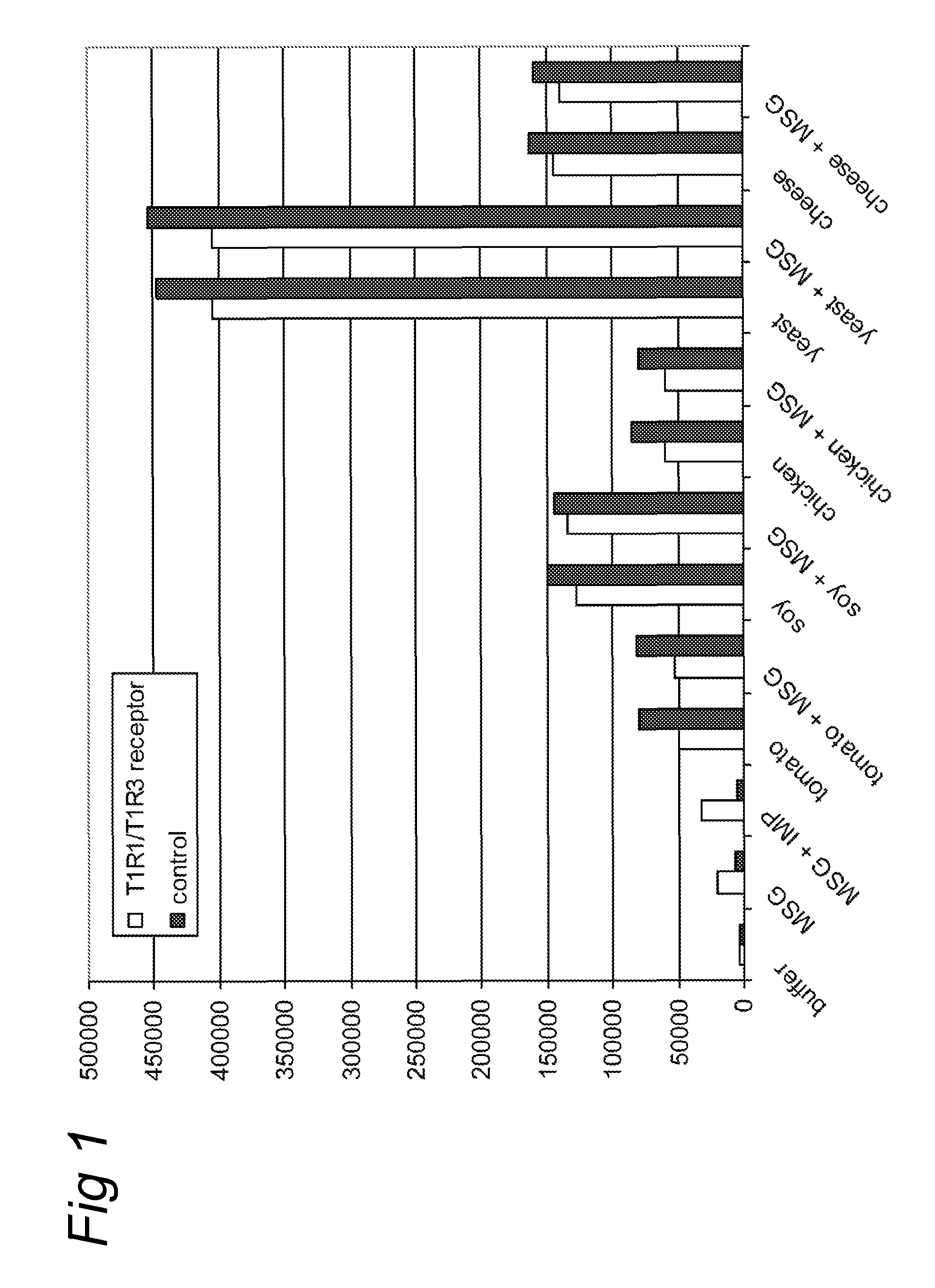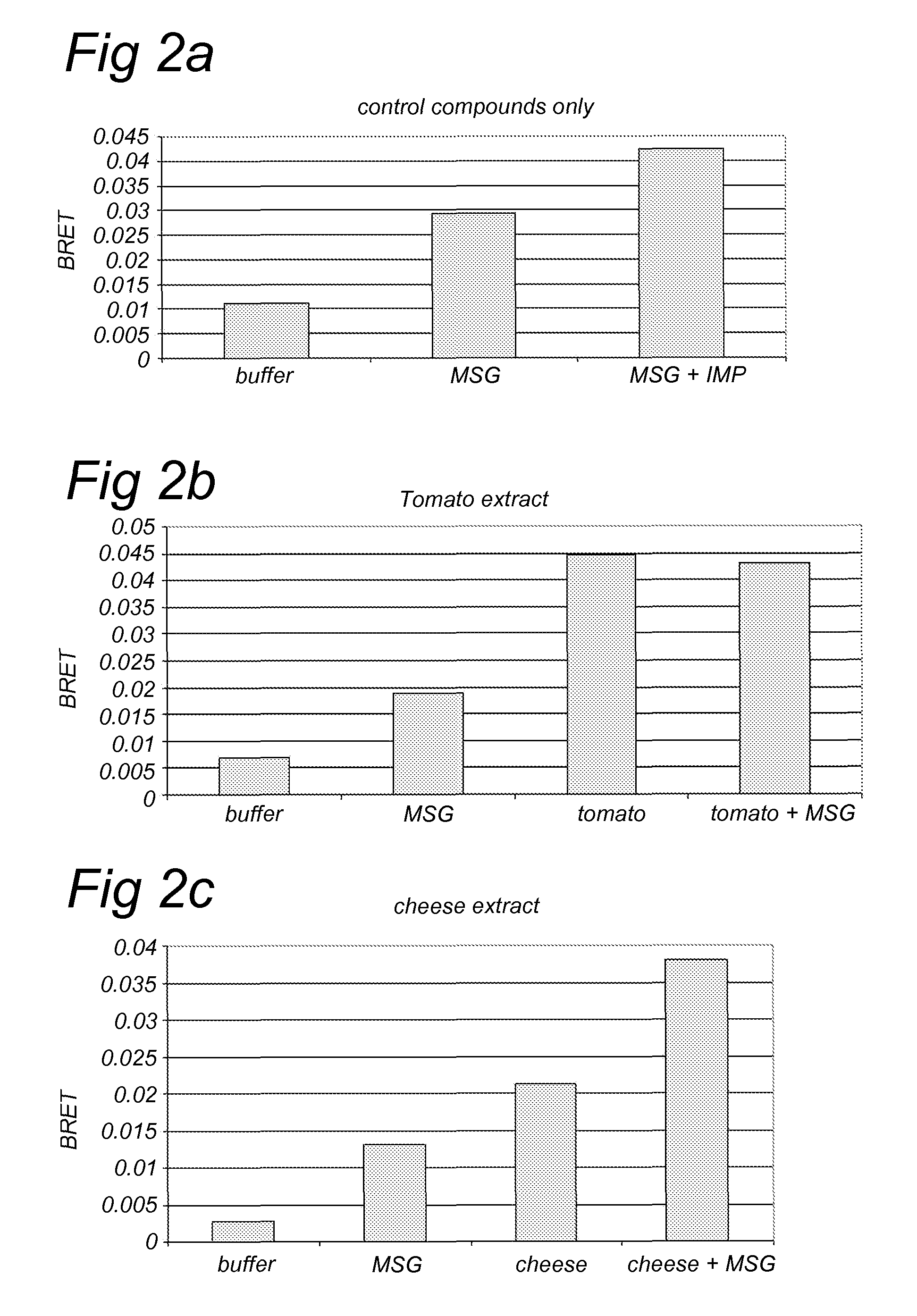Method for screening a potential modulator compound of a taste receptor
a technology of potential modulator and compound, which is applied in the field of screening a potential modulator compound of a taste receptor, can solve the problems of unspecific calcium signal induced by agonists, difficult to test extracts or complex samples, and direct screening of these samples
- Summary
- Abstract
- Description
- Claims
- Application Information
AI Technical Summary
Benefits of technology
Problems solved by technology
Method used
Image
Examples
example 1
Proof of Principle Using the Human Umami Receptor T1R1 / T1R3
[0092]We developed a unique functional umami receptor assay to evaluate and quantify umami in tomato and other crude plant or food extracts using the BRET technique: to test the principle we used the donor and acceptor proteins relating to BRET-2. In short, the human T1R1 and T1R3 taste receptors were cloned and fused with Renilla luciferase (Rluc) as donor protein; green fluorescent protein-2 (GFP2) served as acceptor protein and was fused to β-arrestin-2. Both constructs were transfected into a HEK293 cell line cells) for heterologous expression of the proteins. Various mammalian cell lines have been reported to be highly suitable for expression of receptors or other proteins, with HEK293 (human embryonic kidney) cells and CHO (Chinese hamster ovary) cells being some of the most versatile and suitable ones12. Similarly, GPCRs can be expressed in various ways as described in multiple publications, such as transient6, 8, 13-...
example 2
Detection of Taste Modulators in Complex Samples
Preparation and Selection of Test Samples (Extracts)
[0093]The extracts or crude mixtures described below are examples for natural samples unsuitable for testing with a calcium-based receptor assay due to their high non-specific background signal. They are from different origin and are selected to illustrate a wide range of potential test samples. The selected samples are also known to contain glutamate, ribotides or both and are therefore good candidates to examine in a BRET assay using the umami receptor T1R1 / T1R3 as example.[0094]Tomato: The preparation of tomato extract is already been described in Example 1[0095]Yeast extract: Commercially available yeast extract enriched for 5′-ribotides (DSM, Maxarome Select yeast extract). The yeast extract was dissolved in water (10× weight of yeast extract).[0096]Soy sauce: commercially available soy sauce was used (Conimex ketjap manis).[0097]Chicken bouillon: A commercially available chicken...
PUM
| Property | Measurement | Unit |
|---|---|---|
| density | aaaaa | aaaaa |
| emission wavelength | aaaaa | aaaaa |
| excitation wavelength | aaaaa | aaaaa |
Abstract
Description
Claims
Application Information
 Login to View More
Login to View More - R&D
- Intellectual Property
- Life Sciences
- Materials
- Tech Scout
- Unparalleled Data Quality
- Higher Quality Content
- 60% Fewer Hallucinations
Browse by: Latest US Patents, China's latest patents, Technical Efficacy Thesaurus, Application Domain, Technology Topic, Popular Technical Reports.
© 2025 PatSnap. All rights reserved.Legal|Privacy policy|Modern Slavery Act Transparency Statement|Sitemap|About US| Contact US: help@patsnap.com



